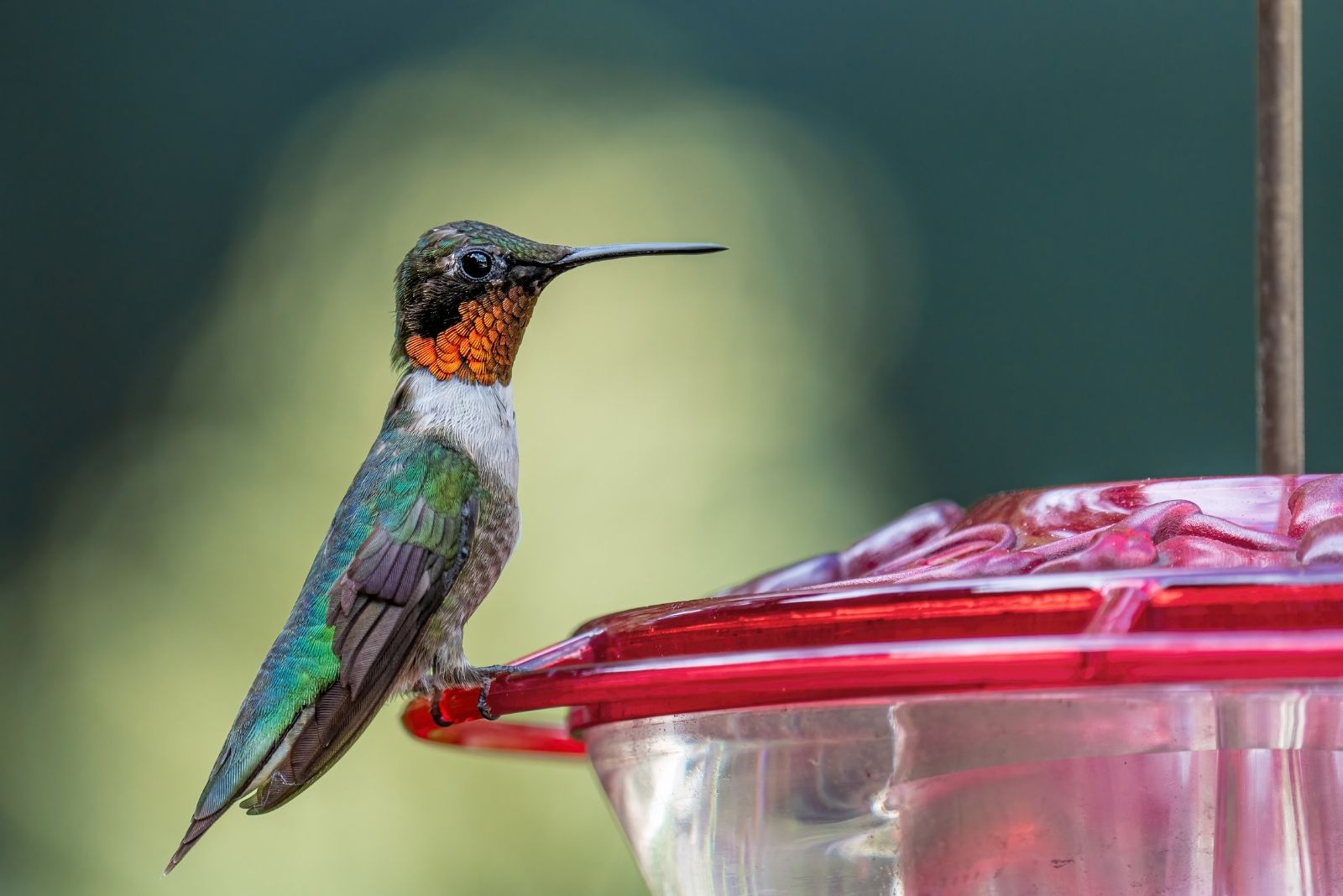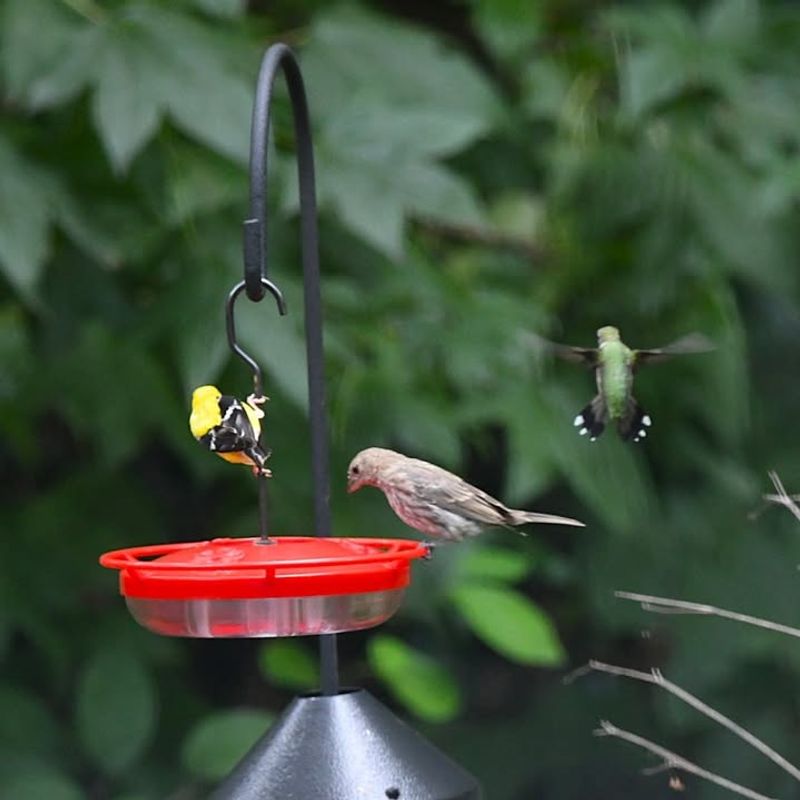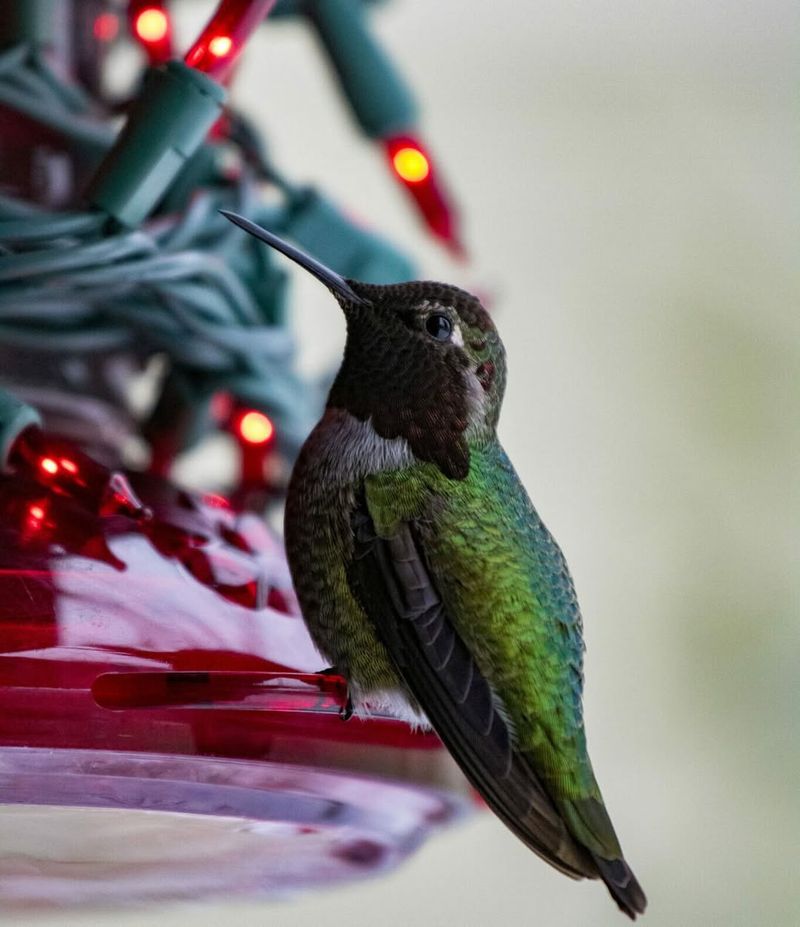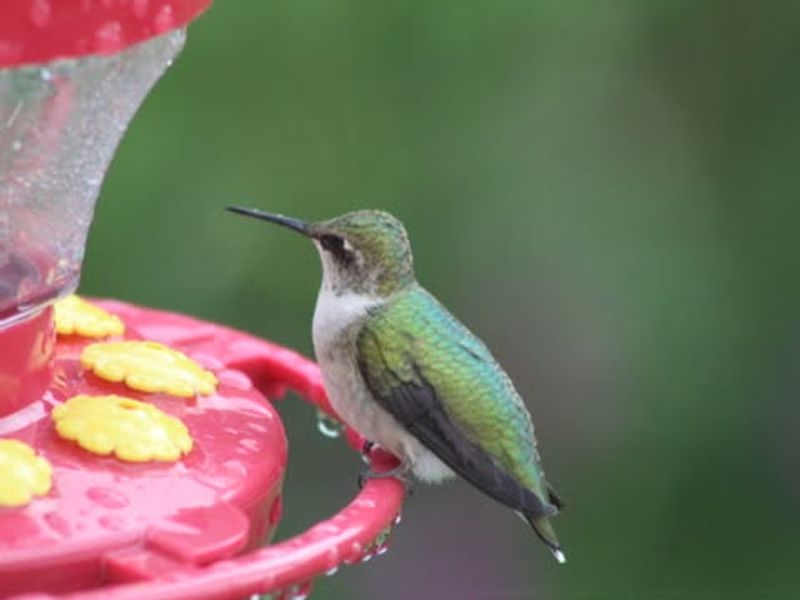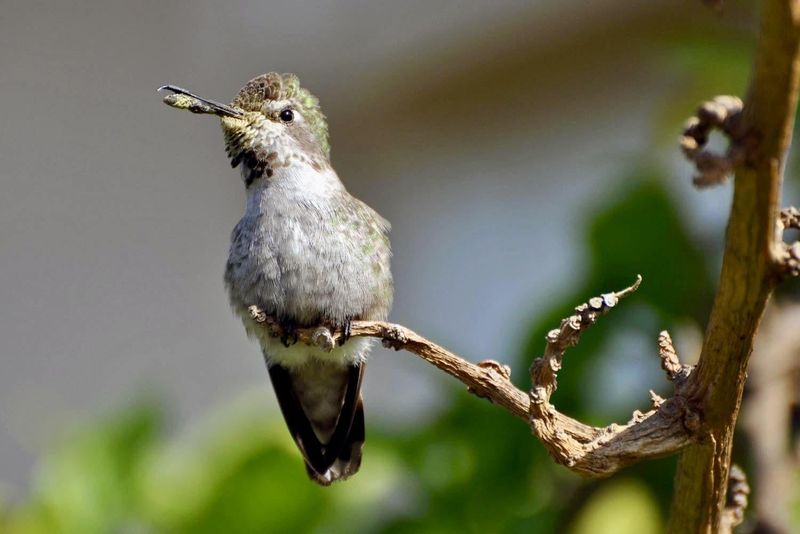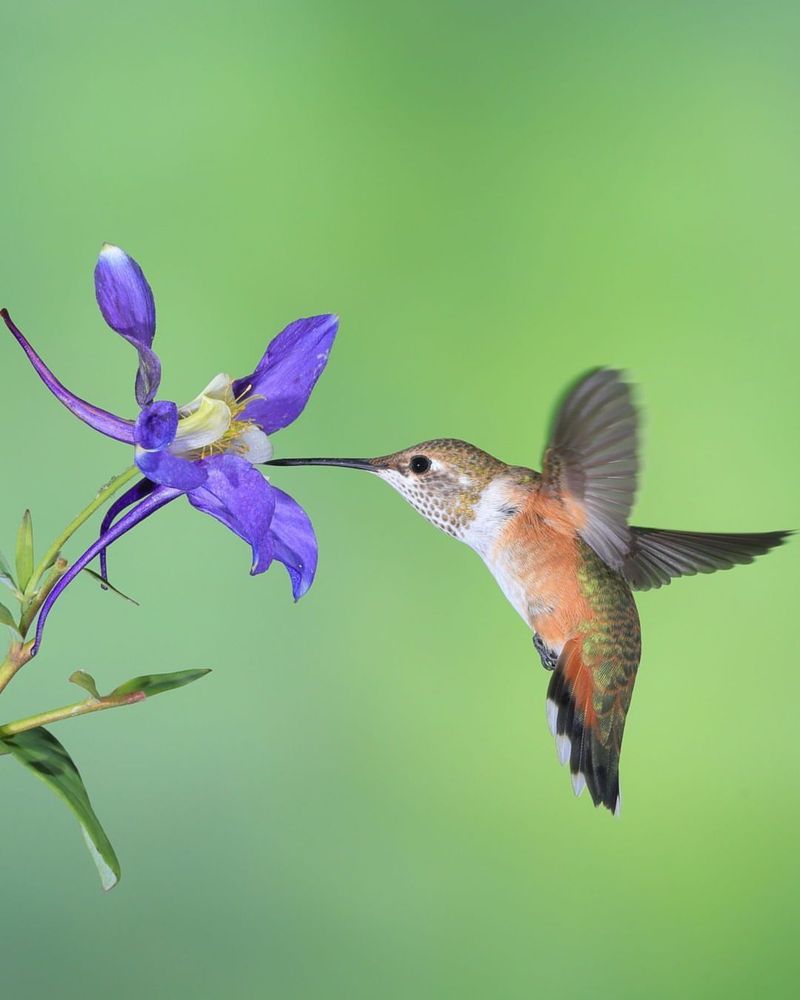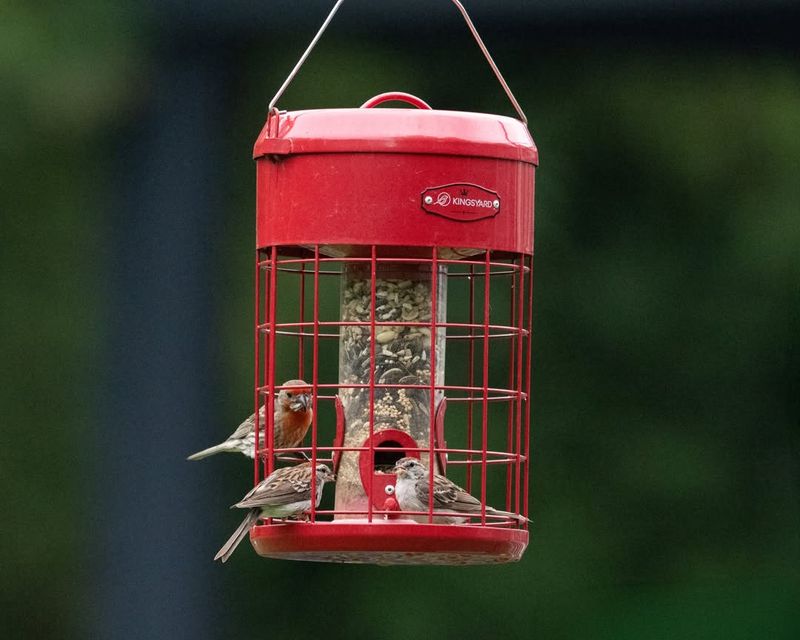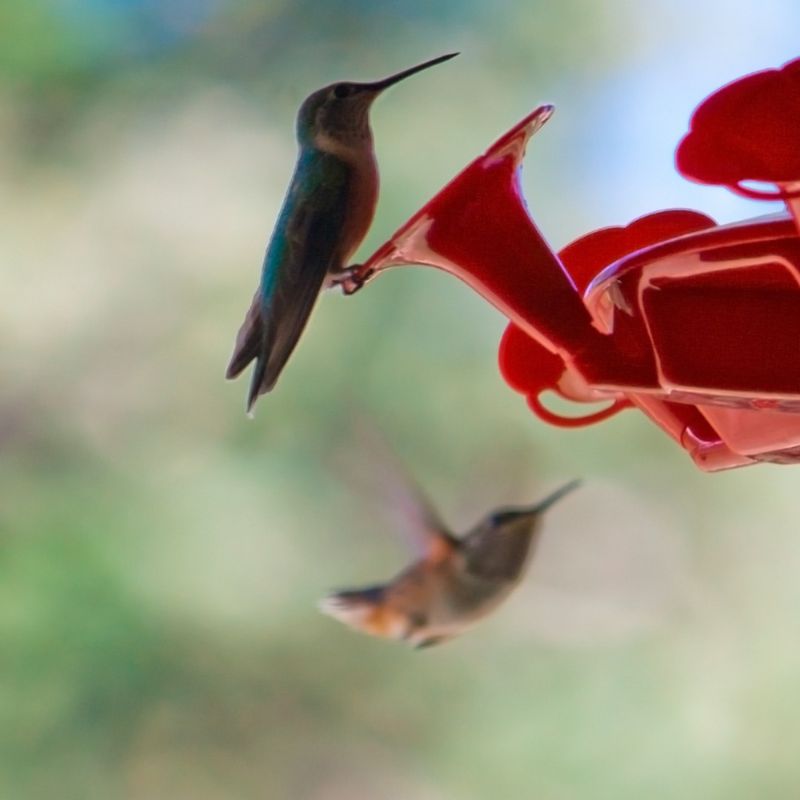Massachusetts gardens are lively with hummingbirds through the summer, but knowing when to take down feeders is essential for the birds’ safety and your maintenance routine.
Paying attention to seasonal cues helps you make the right call without leaving feeders out too long or removing them too early. I’ve found that watching the gradual drop in visits makes the decision much easier.
1. Consistent Drop In Feeder Visits
When you notice fewer hummingbirds stopping by each day, migration is likely underway. In my Massachusetts backyard, I noticed that when visits became sporadic, it meant most birds had already started their journey south.
Hummingbirds follow instinct and food availability. Once natural nectar sources dwindle and temperatures shift, they begin leaving the area.
Keep an eye on your feeder for about a week after the last sighting. If no birds return, it’s safe to take it down and clean it thoroughly before storing for winter.
2. Overnight Temperatures Regularly Dip Below Freezing
Cold nights can freeze nectar inside feeders, making it inaccessible and potentially harmful to birds. Frozen sugar water expands and can crack feeder components, leading to leaks and waste.
For me, checking the local hummingbird migration reports helped me decide the right time to take down my feeders. Once freezing became regular, I knew it was time.
If temperatures stay below 32 degrees Fahrenheit consistently at night, remove your feeder. Hummingbirds won’t stick around in freezing conditions, and leaving feeders out risks damage and mold growth.
3. Migration Reports Show Birds Have Left The Region
Online migration trackers and local birding groups provide real-time updates on hummingbird movements. These resources help you understand when the majority of birds have departed your area.
Massachusetts typically sees ruby-throated hummingbirds leave by mid-to-late September. Stragglers may linger into early October, but they’re rare.
I check regional reports every few days during fall. Once sightings drop off significantly across the state, I feel confident removing my feeders without worrying about stranding any late travelers seeking nourishment.
4. Nectar Spoils Faster Than Birds Can Consume It
When feeders sit untouched for days, nectar ferments and grows mold. Spoiled sugar water can make birds sick and attracts unwanted insects like wasps and ants.
Cleaning feeders every few days becomes tedious when no birds are around. If you’re dumping unused nectar repeatedly, it’s a clear signal that demand has vanished.
Save yourself the hassle and protect any remaining birds by removing feeders once consumption stops. Store them clean and dry until next spring when hummingbirds return to Massachusetts gardens.
5. Natural Food Sources Are Still Abundant
Late summer and early fall bring plenty of blooming flowers that provide natural nectar. Hummingbirds prefer fresh floral sources over feeders when available.
Asters, salvias, and other native plants continue flowering into September across Massachusetts. Birds will choose these over artificial feeders, making your setup redundant.
Once flowers fade and birds have migrated, feeders serve no purpose. Remove them after blooms die back and bird activity ceases. This approach aligns feeder removal with natural seasonal changes.
6. You’ve Seen No Activity For Two Full Weeks
Two weeks without a single visit is a reliable indicator that hummingbirds have moved on. Waiting this long ensures you’re not removing feeders prematurely and leaving stragglers without food.
In my Massachusetts backyard, I noticed that when the mornings got consistently chilly, the feeders weren’t being visited much. After 14 days of silence, I knew it was time.
Mark your calendar after the last sighting. If nothing changes by day fourteen, take down your feeder, wash it with hot soapy water, and store it properly.
7. Wasps And Bees Have Taken Over The Feeder
As hummingbird activity decreases, insects move in aggressively. Wasps and bees are attracted to sweet nectar and can dominate feeders, making them dangerous for any remaining birds.
These pests become more desperate for food sources as fall approaches. If your feeder has become an insect magnet with no birds in sight, there’s no reason to keep it up.
Remove the feeder immediately to avoid stings and reduce insect populations near your home. Clean it thoroughly before storage to prevent attracting pests indoors during winter months.

